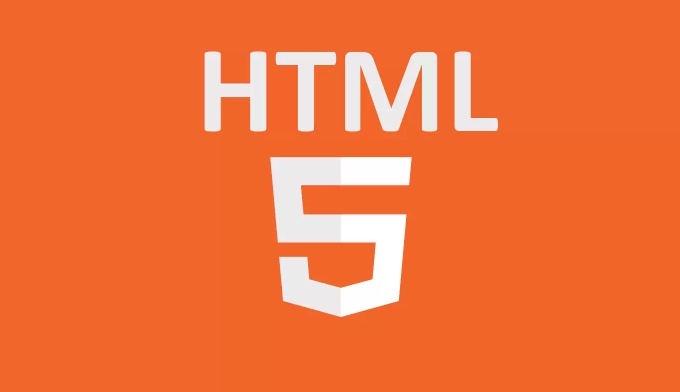Developing Offline Web Applications with HTML5
Jul 09, 2025 am 12:10 AMHow to implement offline available web applications? The answer is to utilize HTML5's caching mechanism and service worker threads. The first step is to use Service Workers to cooperate with the Cache Storage API to replace the obsolete AppCache, pre-cache key resources such as HTML, CSS, and JS, and intercept requests to return content according to the policy; the second step is to adopt a flexible cache strategy, prioritizing the read cache is suitable for static resources, and the cache is suitable for interfaces requiring the latest data if the network fails, and synchronous updates in the background are suitable for non-instant content; the third step is to choose a local storage solution, such as localStorage to store simple data, IndexedDB stores complex or large amounts of data, and temporarily store user operations when the network is disconnected, such as filling in a form, and submit asynchronously after the network is restored and the status is marked to avoid repeated sending.

Sometimes the network is not available, but users still need to be able to continue using your web application. HTML5 provides some powerful features that allow you to develop web applications that are available offline. The key is how to make good use of these features so that the application can run normally without a network.

The core of offline operation: caching mechanism
To achieve offline access, the first step is to let the browser know which resources should be cached. HTML5's Application Cache (AppCache) was once the mainstream solution, but it has now been eliminated. Now it is recommended to use Service Workers with the Cache Storage API.
- Register a backend script using Service Worker
- Precache key resources (such as HTML, CSS, JS) during the installation phase
- Intercept requests and return cached content according to policy or get from the network
For example, you can pre-cache the homepage, stylesheet, and main JS files so that even if the network is disconnected, users can still see the basic interface and operate.

Resource loading and update policies
Having cache alone is not enough, you also need to consider how to deal with dynamic content and cache updates. Service Worker can flexibly control the resource loading method:
- Priority read cache : suitable for static resources, such as images, fonts, and library files
- Read cache again if the network fails : suitable for interface requests that require the latest data
- Background Synchronized Update Cache : For content that is not updated instantly
Note that the cache strategy is not static. For example, for the user's avatar or configuration information, you may need to try to connect to the Internet to obtain a new version every time, and the main interface layout can be cached for a long time.

Local data storage solution
In addition to static resources, users may also generate some temporary data. At this time, you need a suitable local storage mechanism:
-
localStorage: suitable for small-sized and simple-structure data -
IndexedDB: Suitable for complex data structures or large amounts of data storage -
Web SQL: Although it is abandoned, it is still available in some old environments
For example, if the user fills out a form offline, you can save it to IndexedDB first, and then submit it asynchronously after restoring the network. Remember to add a status mark to avoid repeated sending.
Basically that's it. Implementing offline web applications is not complicated, but details are easily overlooked, such as cache cleaning, version management, and the life cycle of service worker threads. As long as resource cache and data storage are planned reasonably, the user experience can be greatly improved.
The above is the detailed content of Developing Offline Web Applications with HTML5. For more information, please follow other related articles on the PHP Chinese website!

Hot AI Tools

Undress AI Tool
Undress images for free

Undresser.AI Undress
AI-powered app for creating realistic nude photos

AI Clothes Remover
Online AI tool for removing clothes from photos.

Clothoff.io
AI clothes remover

Video Face Swap
Swap faces in any video effortlessly with our completely free AI face swap tool!

Hot Article

Hot Tools

Notepad++7.3.1
Easy-to-use and free code editor

SublimeText3 Chinese version
Chinese version, very easy to use

Zend Studio 13.0.1
Powerful PHP integrated development environment

Dreamweaver CS6
Visual web development tools

SublimeText3 Mac version
God-level code editing software (SublimeText3)
 Handling reconnections and errors with HTML5 Server-Sent Events.
Jul 03, 2025 am 02:28 AM
Handling reconnections and errors with HTML5 Server-Sent Events.
Jul 03, 2025 am 02:28 AM
When using HTML5SSE, the methods to deal with reconnection and errors include: 1. Understand the default reconnection mechanism. EventSource retrys 3 seconds after the connection is interrupted by default. You can customize the interval through the retry field; 2. Listen to the error event to deal with connection failure or parsing errors, distinguish error types and execute corresponding logic, such as network problems relying on automatic reconnection, server errors manually delay reconnection, and authentication failure refresh token; 3. Actively control the reconnection logic, such as manually closing and rebuilding the connection, setting the maximum number of retry times, combining navigator.onLine to judge network status to optimize the retry strategy. These measures can improve application stability and user experience.
 Integrating CSS and JavaScript effectively with HTML5 structure.
Jul 12, 2025 am 03:01 AM
Integrating CSS and JavaScript effectively with HTML5 structure.
Jul 12, 2025 am 03:01 AM
HTML5, CSS and JavaScript should be efficiently combined with semantic tags, reasonable loading order and decoupling design. 1. Use HTML5 semantic tags, such as improving structural clarity and maintainability, which is conducive to SEO and barrier-free access; 2. CSS should be placed in, use external files and split by module to avoid inline styles and delayed loading problems; 3. JavaScript is recommended to be introduced in front, and use defer or async to load asynchronously to avoid blocking rendering; 4. Reduce strong dependence between the three, drive behavior through data-* attributes and class name control status, and improve collaboration efficiency through unified naming specifications. These methods can effectively optimize page performance and collaborate with teams.
 Declaring the correct HTML5 doctype for modern pages.
Jul 03, 2025 am 02:35 AM
Declaring the correct HTML5 doctype for modern pages.
Jul 03, 2025 am 02:35 AM
Doctype is a statement that tells the browser which HTML standard to use to parse the page. Modern web pages only need to be written at the beginning of the HTML file. Its function is to ensure that the browser renders the page in standard mode rather than weird mode, and must be located on the first line, with no spaces or comments in front of it; there is only one correct way to write it, and it is not recommended to use old versions or other variants; other such as charset, viewport, etc. should be placed in part.
 Receiving real-time data with HTML5 Server-Sent Events (SSE).
Jul 02, 2025 pm 04:46 PM
Receiving real-time data with HTML5 Server-Sent Events (SSE).
Jul 02, 2025 pm 04:46 PM
Server-SentEvents (SSE) is a lightweight solution provided by HTML5 to push real-time updates to the browser. It realizes one-way communication through long HTTP connections, which is suitable for stock market, notifications and other scenarios. Create EventSource instance and listen for messages when using: consteventSource=newEventSource('/stream'); eventSource.onmessage=function(event){console.log('Received message:',event.data);}; The server needs to set Content-Type to text/event
 Improving SEO with HTML5 semantic markup and Microdata.
Jul 03, 2025 am 01:16 AM
Improving SEO with HTML5 semantic markup and Microdata.
Jul 03, 2025 am 01:16 AM
Using HTML5 semantic tags and Microdata can improve SEO because it helps search engines better understand page structure and content meaning. 1. Use HTML5 semantic tags such as,,,, and to clarify the function of page blocks, which helps search engines establish a more accurate page model; 2. Add Microdata structured data to mark specific content, such as article author, release date, product price, etc., so that search engines can identify information types and use them for display of rich media summary; 3. Pay attention to the correct use of tags to avoid confusion, avoid duplicate tags, test the effectiveness of structured data, regularly update to adapt to changes in schema.org, and combine with other SEO means to optimize for long-term.
 Explaining the HTML5 `` vs `` elements.
Jul 12, 2025 am 03:09 AM
Explaining the HTML5 `` vs `` elements.
Jul 12, 2025 am 03:09 AM
It is a block-level element, suitable for layout; it is an inline element, suitable for wrapping text content. 1. Exclusively occupy a line, width, height and margins can be set, which are often used in structural layout; 2. No line breaks, the size is determined by the content, and is suitable for local text styles or dynamic operations; 3. When choosing, it should be judged based on whether the content needs independent space; 4. It cannot be nested and is not suitable for layout; 5. Priority is given to the use of semantic labels to improve structural clarity and accessibility.
 Getting the user's current location with the HTML5 Geolocation API.
Jul 02, 2025 pm 05:03 PM
Getting the user's current location with the HTML5 Geolocation API.
Jul 02, 2025 pm 05:03 PM
When using HTML5Geolocation API to obtain user location, you must first obtain user authorization, and request and explain the purpose at the right time; the basic method is navigator.geolocation.getCurrentPosition(), which contains successful callbacks, wrong callbacks and configuration parameters; common reasons for failure include permission denied, browser not supported, network problems, etc., alternative solutions and clear prompts should be provided. The specific suggestions are as follows: 1. Request permissions when the user operation is triggered, such as clicking the button; 2. Use enableHighAccuracy, timeout, maximumAge and other parameters to optimize the positioning effect; 3. Error handling should distinguish between different errors
 Understanding HTML5 Media Source Extensions (MSE)
Jul 08, 2025 am 02:31 AM
Understanding HTML5 Media Source Extensions (MSE)
Jul 08, 2025 am 02:31 AM
MSE (MediaSourceExtensions) is part of the W3C standard, allowing JavaScript to dynamically build media streams, thus enabling advanced video playback capabilities. It manages media sources through MediaSource, stores data from SourceBuffer, and represents the buffering time range through TimeRanges, allowing the browser to dynamically load and decode video clips. The process of using MSE includes: ① Create a MediaSource instance; ② Bind it to an element; ③ Add SourceBuffer to receive data in a specific format; ④ Get segmented data through fetch() and append it to the buffer. Common precautions include: ① Format compatibility issues; ② Time stamp pair






